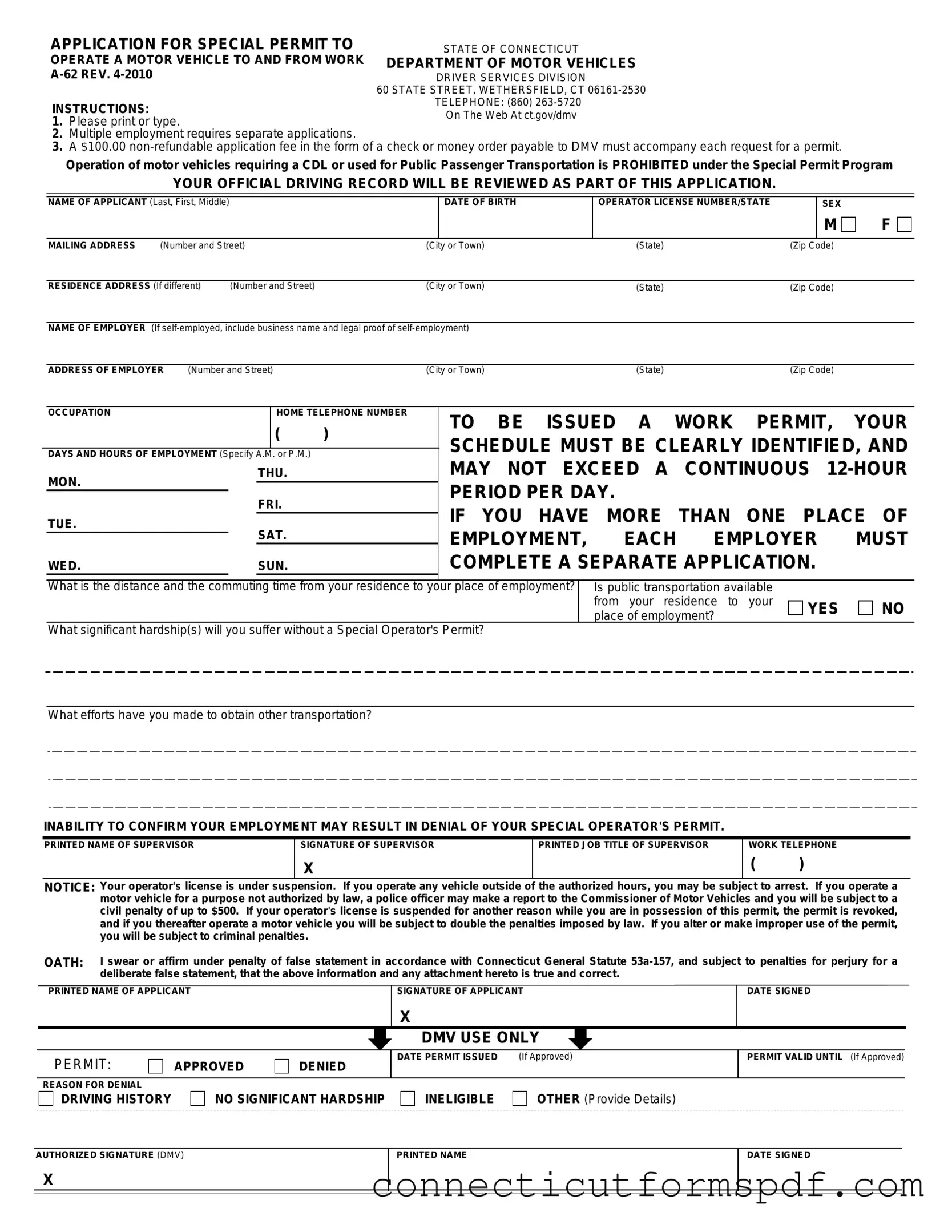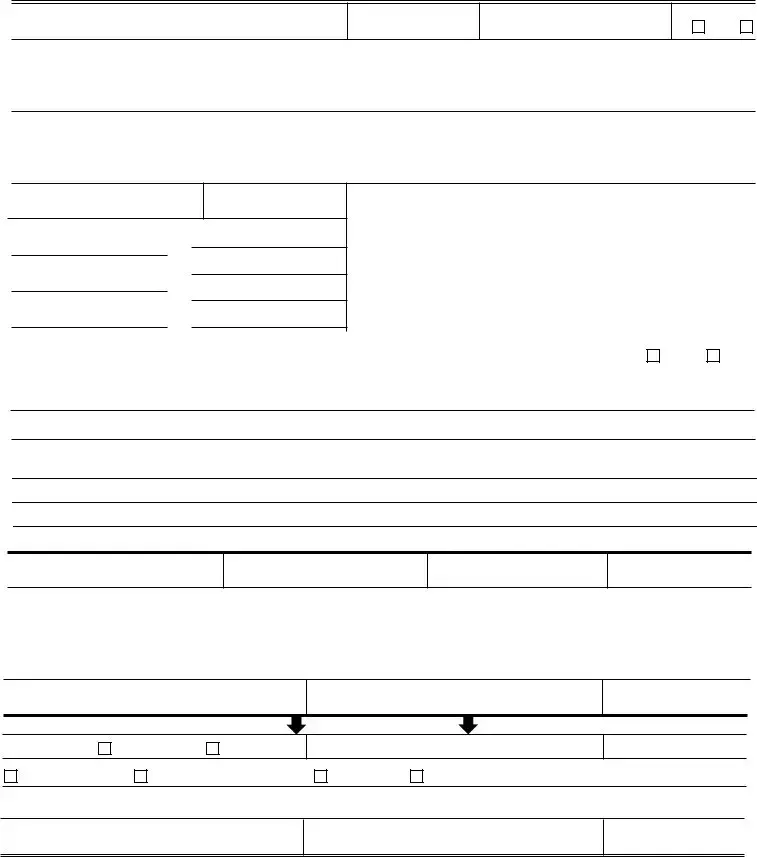STATE OF CONNECTICUT
DEPARTMENT OF MOTOR VEHICLES
DRIVER SERVICES DIVISION
60 STATE STREET, WETHERSFIELD, CT 06161-2530
TELEPHONE: (860) 263-5720 On The Web At ct.gov/dmv
APPLICATION FOR SPECIAL PERMIT TO
OPERATE A MOTOR VEHICLE TO AND FROM WORK
A-62 REV. 4-2010
INSTRUCTIONS:
1. Please print or type.
2. Multiple employment requires separate applications.
3. A $100.00 non-refundable application fee in the form of a check or money order payable to DMV must accompany each request for a permit.
Operation of motor vehicles requiring a CDL or used for Public Passenger Transportation is PROHIBITED under the Special Permit Program
YOUR OFFICIAL DRIVING RECORD WILL BE REVIEWED AS PART OF THIS APPLICATION.
NAME OF APPLICANT (Last, First, Middle)
OPERATOR LICENSE NUMBER/STATE
|
|
|
|
|
|
MAILING ADDRESS |
(Number and Street) |
(City or Town) |
(State) |
(Zip Code) |
|
|
|
|
|
RESIDENCE ADDRESS (If different) |
(Number and Street) |
(City or Town) |
(State) |
(Zip Code) |
NAME OF EMPLOYER (If self-employed, include business name and legal proof of self-employment)
ADDRESS OF EMPLOYER |
(Number and Street) |
(City or Town) |
(State) |
(Zip Code) |
OCCUPATION |
HOME TELEPHONE NUMBER |
( )
DAYS AND HOURS OF EMPLOYMENT (Specify A.M. or P.M.)
TO BE ISSUED A WORK PERMIT, YOUR SCHEDULE MUST BE CLEARLY IDENTIFIED, AND
MAY NOT EXCEED A CONTINUOUS 12-HOUR PERIOD PER DAY.
IF YOU HAVE MORE THAN ONE PLACE OF
EMPLOYMENT, EACH EMPLOYER MUST
COMPLETE A SEPARATE APPLICATION.
What is the distance and the commuting time from your residence to your place of employment? |
Is public transportation available |
|
|
|
from your residence to your |
YES |
NO |
|
place of employment? |
|
|
|
What significant hardship(s) will you suffer without a Special Operator's Permit? |
|
|
What efforts have you made to obtain other transportation?
INABILITY TO CONFIRM YOUR EMPLOYMENT MAY RESULT IN DENIAL OF YOUR SPECIAL OPERATOR'S PERMIT.
PRINTED NAME OF SUPERVISOR
SIGNATURE OF SUPERVISOR
X
PRINTED JOB TITLE OF SUPERVISOR
Your operator's license is under suspension. If you operate any vehicle outside of the authorized hours, you may be subject to arrest. If you operate a motor vehicle for a purpose not authorized by law, a police officer may make a report to the Commissioner of Motor Vehicles and you will be subject to a civil penalty of up to $500. If your operator's license is suspended for another reason while you are in possession of this permit, the permit is revoked, and if you thereafter operate a motor vehicle you will be subject to double the penalties imposed by law. If you alter or make improper use of the permit, you will be subject to criminal penalties.
I swear or affirm under penalty of false statement in accordance with Connecticut General Statute 53a-157, and subject to penalties for perjury for a deliberate false statement, that the above information and any attachment hereto is true and correct.
PRINTED NAME OF APPLICANT |
SIGNATURE OF APPLICANT |
DATE SIGNED |
X
DMV USE ONLY
DATE PERMIT ISSUED |
(If Approved) |
PERMIT VALID UNTIL (If Approved)
AUTHORIZED SIGNATURE (DMV)
X

